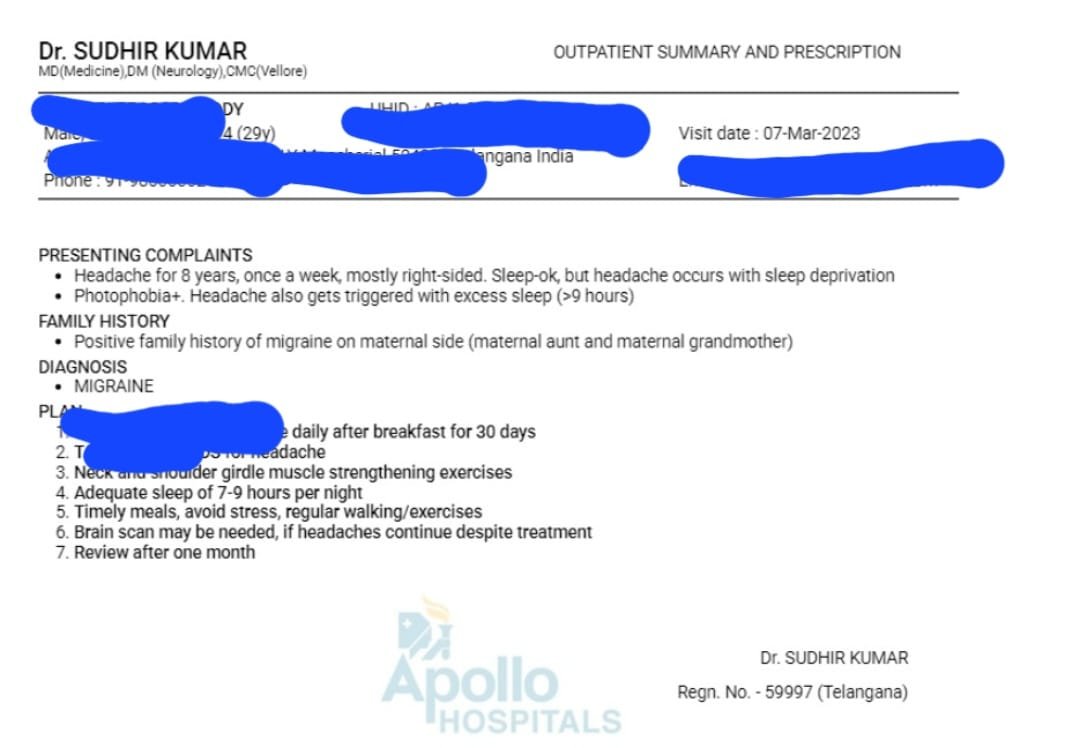
A teenager referred with "difficult to control" fits needed non-drug approach for controlling fits
1. 15-year old Rishi had been having fits for the past three months. He used to have jerky movements of hands and legs that lasted several hours and occurred 15-20 times per day.
1. 15-year old Rishi had been having fits for the past three months. He used to have jerky movements of hands and legs that lasted several hours and occurred 15-20 times per day.
1a. He was seen by local doctors. MRI brain & EEG were normal.
He was started on anti-epileptic drug (AED). As seizures did not get controlled with single AED, two more drugs were sequentially added. As seizures continued despite giving maximum doses of 3 AEDs, he was referred.
He was started on anti-epileptic drug (AED). As seizures did not get controlled with single AED, two more drugs were sequentially added. As seizures continued despite giving maximum doses of 3 AEDs, he was referred.
2. Rishi had no past history of fits or febrile seizures in early childhood. There was no family history of epilepsy. He was a bright kid, doing well in studies.
While in OPD, I witnessed one of the episodes of fits, which made me suspect the root cause of fits in Rishi.
While in OPD, I witnessed one of the episodes of fits, which made me suspect the root cause of fits in Rishi.
3. I obtained more details from parents. Rishi was a bright kid, doing well in studies. After 10th from a reputed international school, he was shifted to a boarding college for coaching for IIT entrance examination.
I requested parents to allow me talk to Rishi in private.
I requested parents to allow me talk to Rishi in private.
4. While talking to Rishi, I could identify a few possible stressors:
*His parents always compared him with his elder brother, who had already got selected into IIT, & Rishi was made to feel inferior to him.
*He was not able to fully adjust with hostel life & felt home sick.
*His parents always compared him with his elder brother, who had already got selected into IIT, & Rishi was made to feel inferior to him.
*He was not able to fully adjust with hostel life & felt home sick.
4a.
*The schedule at boarding college was too tight, with 14 hours of studies and limited time to sleep.
*Rishi was nervous that he may not qualify for IIT, thereby upsetting his parents.
*He was depressed as well as anxious.
Now, the diagnosis was pretty obvious.
*The schedule at boarding college was too tight, with 14 hours of studies and limited time to sleep.
*Rishi was nervous that he may not qualify for IIT, thereby upsetting his parents.
*He was depressed as well as anxious.
Now, the diagnosis was pretty obvious.
5. Got a video EEG recording done that confirmed the diagnosis- non-epileptic attacks (previously called psychogenic seizures).
*I discussed the diagnosis & treatment options with Rishi's parents.
*I counselled them as well as Rishi.
*Psychiatrist & Psychologist were consulted
*I discussed the diagnosis & treatment options with Rishi's parents.
*I counselled them as well as Rishi.
*Psychiatrist & Psychologist were consulted
6. I discontinued all the anti-epileptic drugs. He was started on anti-depressant medication.
At one month review, Rishi looked happy and cheerful. He had remained seizure-free during that period.
#MedTwitter #neurotwitter #psychtwitter #epilepsy
At one month review, Rishi looked happy and cheerful. He had remained seizure-free during that period.
#MedTwitter #neurotwitter #psychtwitter #epilepsy
7. Take home messages
*Look for stressors in cases of epilepsy, especially if the fits are difficult to control.
*Consider non-epileptic fits if seizure frequency is high or fits are prolonged, or patient remains alert post-seizure
*Careful history and Video EEG aid in diagnosis.
*Look for stressors in cases of epilepsy, especially if the fits are difficult to control.
*Consider non-epileptic fits if seizure frequency is high or fits are prolonged, or patient remains alert post-seizure
*Careful history and Video EEG aid in diagnosis.
• • •
Missing some Tweet in this thread? You can try to
force a refresh










